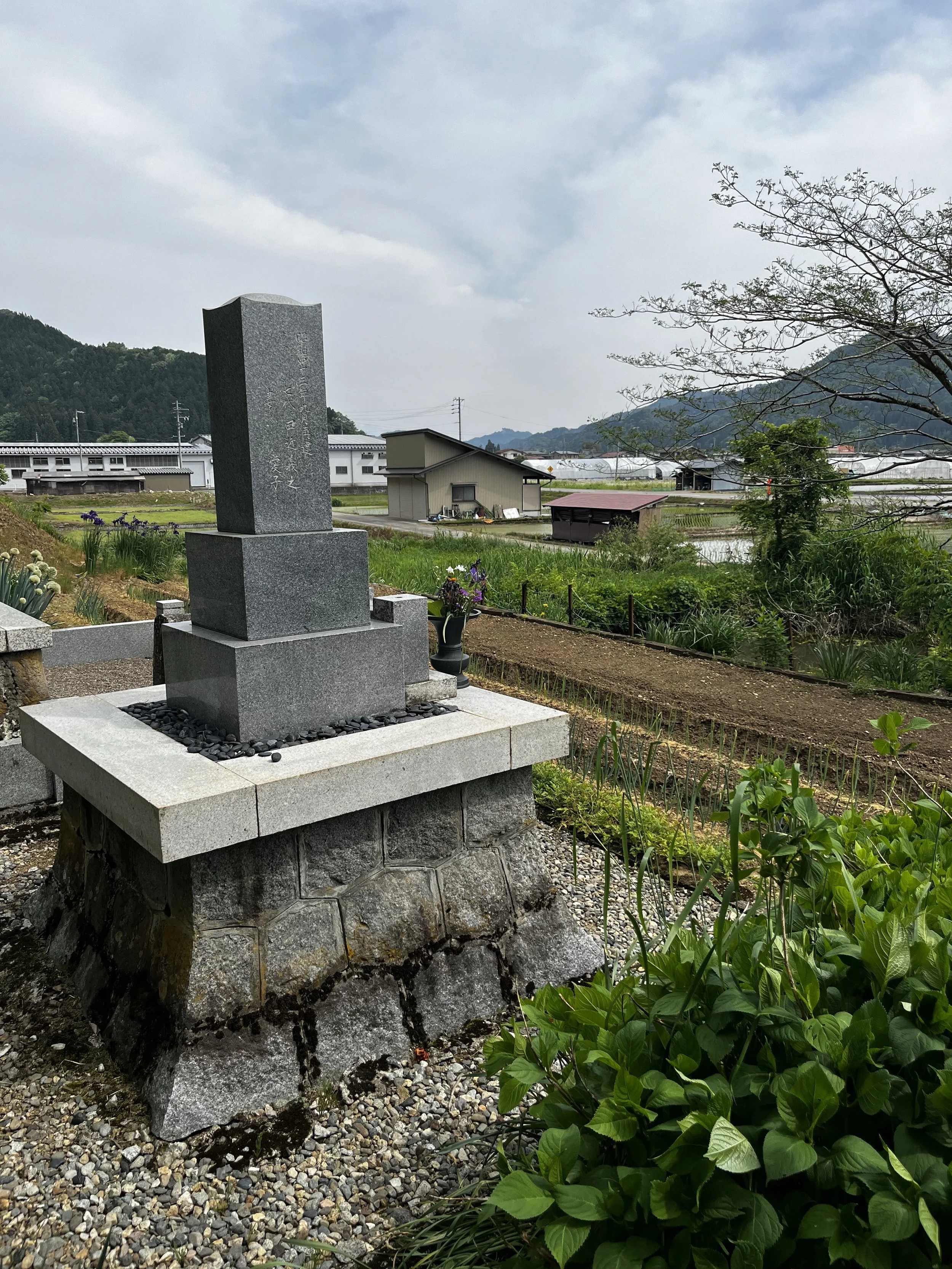Know the Layers
Japanese burial marker with a patch of land for farming in front.
You have to see the layers. They envelope use, yet we rarely stop to pay attention.
It is rare the tourist groups who stop by our graves even notice us. They’re more interested in tasting the spring water coursing down the mountain. Almost every day we hear some interchangeable guide encouraging the latest group to crouch down and stick their faces in the trickle of fresh water to get the full experience. Some do it with gusto. Others wait to make sure someone is filming the experience before diving in with commentary about this being the best water they’ve ever had. (I mean, maybe?)
But on this day, something extraordinary happened. One of the women on the tour asked the guide to talk about us. The dead. The seemingly overlooked. She asked, “Can you tell me about the graves?” He got our story mostly right - this is a family burial ground where generations are buried (some are not shown here but are just off to the left and right), and the plot of land in front of the marker is used for crops. What I wanted him to tell her was to look at the layers. Bend down and pick up a stone. Touch a leaf. Take a closer look at the rice paddies on the bike trip back.
We are part of a fragile ecosystem in every sense. At the micro-level, I wanted her to know those stones were carefully chosen by my great-grandmother when she interred my great-grandfathers ashes. I know this because that story was passed down each year we remembered him. I am sure something was lost in the layers of translation through the years, but each pebble was carefully laid there to show the love my grandchildren still have for him. How respect is still a value in our family.
I wanted the guide to explain that the crops on that patch of land are changed regularly to accommodate the land. That in our family, we plant in our memorial garden to make sure future generations never forget where they came from. Forget what this valley has given and continues to give to them. We want them to touch the dirt that has given so much, yet taken even more in some years.
The guides gush about the water. They should. I want them to tell the visitors the mountain water is what keeps the rice paddies afloat. The water sustains the valley below. It is not a mere gimmick for what social media tool is hip and cool these days. Rice here in Japan was once plentiful. Now we struggle to make sure there is a crop enough to feed our own families let alone the country. Our family graves are not mere stops on the way. They signify that we live and die by this land. Our story is layered in its every grain.
That is why on this day, I shook the tree leaves a bit harder when I heard someone actually want to know about us. About the proud family that still remains harvesting this land. You can see our layers from the rocks. From the wear and tear in the base of the family stone. From the proud obelisk contrasting the overcast sky. The mountains in the back remind us how small our layers are when compared to the wear and tear of time. Water does this. It cracks open the earth and weaves its way in. It pushes mountains. It creates valleys. It sustains the patch of land in front of my gravestone. It helps me commune with the next generation of my family that harvest its crops. They are the next layer of our story.
I am glad someone thought to ask.
